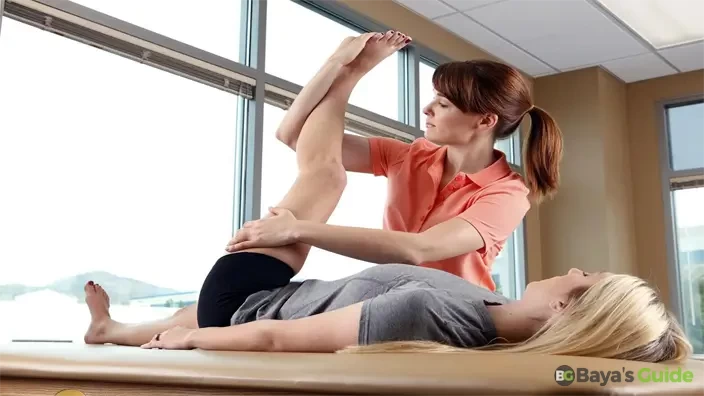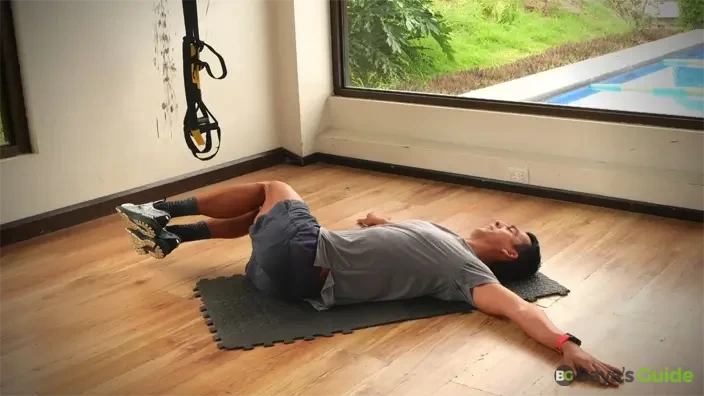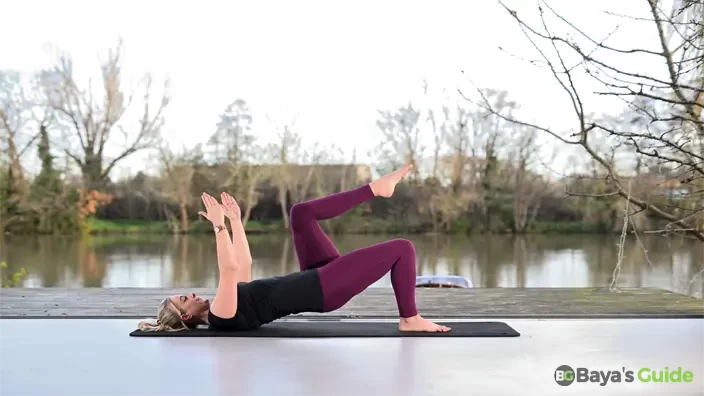In the pursuit of a healthy and pain-free life, the alignment of our hips plays a pivotal role. Whether you're grappling with persistent lower back discomfort, navigating the challenges of a sedentary lifestyle, or aiming to enhance your athletic performance, understanding and addressing hip misalignment can be a transformative journey.
This article serves as your compass, guiding you through effective exercises, stretches, and lifestyle adjustments to realign your hips and embark on a path to improved mobility and overall well-being. Let's delve into the intricacies of hip alignment and discover actionable steps to bring balance back to this crucial part of our body.
Table of Contents
- Essential Factors In Understanding Hip Alignment
- Tips & Exercises For Successful Hip Realignment
- How To Walk With Good Alignment?
- Unraveling The Culprits - Major Causes Of Hip Misalignment
- Reclaiming Alignment: Effective Exercises For Realigning Your Hips
- Hip Alignment Roadmap: Effective Strategies
- Frequently Asked Questions
- Conclusion
Essential Factors In Understanding Hip Alignment
- Some simple lower exercises should be a part of your daily routine while stretching your hips by 90/90 to realign your hips.
- It's a pivot to visit a doctor even when you want to do at-home exercises to alleviate hip misalignments.
- Functional and anatomical cause leg length disparities and eventually roots misaligned hips.
- You may probe the misalignment by touching the crests of your hips.
- If you find hip misalignment, you should consult your physiotherapist instantly.
Tips & Exercises For Successful Hip Realignment
Maintaining proper hip alignment is crucial for overall well-being and can alleviate discomfort associated with issues like lower back pain, hip pain, and postural problems. Whether you're an athlete, someone with a sedentary lifestyle, or simply looking to improve your posture, realigning your hips can contribute to better mobility and reduce the risk of injuries. Here's a comprehensive guide to help you achieve better hip alignment through exercises and lifestyle adjustments.
1- Understanding Hip Misalignment
Hip misalignment can be caused by various factors, including poor posture, muscle imbalances, and injury. Identifying the root cause is essential for effective realignment. Common signs of hip misalignment include uneven hips, lower back pain, limited range of motion, and discomfort while walking.
2- Consultation With A Professional
Before starting any realignment routine, it's advisable to consult with a healthcare professional, such as a physiotherapist or chiropractor. They can assess your specific situation, identify any underlying issues, and provide personalized advice.
3- Posture Awareness
Developing good posture habits is key to preventing hip misalignment. Be mindful of your posture while sitting, standing, and walking. Sit with your back straight and shoulders relaxed, and avoid crossing your legs for extended periods.
4- Ergonomic Adjustments
If you spend long hours sitting at a desk, ensure that your workstation is ergonomically friendly. Adjust the height of your chair and computer screen to promote a neutral spine and hip position.
5- Regular Physical Activity
Engage in regular physical activity to promote overall health and well-being. Activities such as walking, swimming, and yoga can contribute to better hip mobility and alignment.
6- Massage & Bodywork
Consider incorporating massage or bodywork sessions into your routine. Professional therapists can target tight muscles, release tension, and promote better alignment.
7- Strengthening Exercises
Core Strengthening
- Planks
- Leg Raises
- Bicycle Crunches
Hip-Strengthening Exercises
- Clamshells
- Hip Bridges
- Side Leg Raises
Strengthening the muscles surrounding the hips and core is essential for maintaining proper alignment and stability.
8- Stretching & Flexibility
Hip Flexor Stretches
- Lunges
- Pigeon Pose
- Kneeling Hip Flexor Stretch
IT Band Stretch
- Standing IT Band Stretch
- Foam Rolling
Improving flexibility in the hip flexors and IT (iliotibial) band can help alleviate tension and contribute to better hip alignment.
You Might Also Like: How To Clean A Mop Head
How To Walk With Good Alignment?
You might have heard so many people complaining about walking issues as they don’t exactly know how to walk properly. For all intents and purposes, sitting all the time weakens your walking muscles which leads your walking muscles to suboptimal and gapped alignment.
Don’t fret, fixing your misaligned walk is in your approach, you only need to be aware of it proficiently. After that, you will be able to adjust your stride while encouraging your body to be in an aligned state. You need to notice the following things when you are on a walk.
1- Roll The Foot Heel To The Toe
The first thing you need to notice in your stride style is that your heel touches the ground before your toe hits it. If it’s not, make a conscious effort to turn to heels and let them hit the ground during your stride.
2- Use The Foot To Push Off The Ground
Be mindful that your foot should press the ground instead of sliding if you want to have an ideal walk. To gain this stride, you need to practice touching the floor with your heels first and then roll them to your toes. So, from now onward, keep focused and notice the areas that require improvements when you are walking.
3- Keep Legs Hip-Width Apart
Your legs need to stand hip-width apart when you are in a strolling motion. For that, you must analyze how wide your legs should be during stride. Try this test: Walk at a distance on the cracked side of the road and observe the space between your two feet till you take a few footsteps forward. Remember, not to overlook your hip alignment while testing your stride. During this action, you need to keep your foot straight forward exactly parallel to the walk side crack.
After you have tested the way you walk, notice how your legs make you feel when you are walking, keeping the hip-width apart. In the initial steps, you may feel a bit bizarre but with constant practice, you will get used to it – so continue.
4- Move From The Hip (Straight)
In a walking process, you need not bend your knee before you take a step to move forward rather your walk needs to be commenced from your hips. True, it sounds a bit strange but constant practice will avoid your knee bending when you turn your leg back starting from the hips during each footstep.
5- Pelvis Stays Straight
While walking, you will notice your pelvis, the nether part of the trunk, is rotating with each step you are taking. When you place your right foot ahead on the ground, your right hip bone moves, and similarly left hip bone moves with the left step. The sad thing is that your hip muscles don’t work actively with pelvis movement, so it is taken as ideal. The better pattern of walking is when your legs extend instead of the pelvis, it only stays straightened.
6- Eyes On The Horizon
Eye up directly on the way when you walk, look ahead of you. Generally, you bend your eyes to look down at the ground seeing for kids or phones. Looking horizontally helps your body keep upright without bending forward. Notice these things on your walking route daily and practice with an upright walk.
7- Get Core-Strong Posture Walking Alignment
This is the only consistency and method with which you can likely develop a core-strong walk. During the initial walk, you need to observe and analyze the problem areas. Then, you can easily turn your walk into a new and natural-like.
Unraveling The Culprits - Major Causes Of Hip Misalignment
Hip misalignment can disrupt the delicate balance of our musculoskeletal system, leading to discomfort, reduced mobility, and a cascade of related issues. Understanding the root causes is paramount in addressing and preventing hip misalignment. Here are some major contributors to this common problem:
1- Muscle Imbalances
- Weak Core Muscles - Insufficient core strength can contribute to poor posture and destabilize the hip region.
- Imbalanced Hip Muscles - Discrepancies in strength between hip flexors, extensors, abductors, and adductors can lead to misalignment.
2- Poor Posture
- Sedentary Lifestyle - Prolonged sitting weakens muscles and promotes poor posture, impacting the alignment of the hips.
- Incorrect Standing Habits - Standing with uneven weight distribution or slouching can contribute to misaligned hips over time.
3- Injuries & Trauma
- Sports Injuries - Repetitive movements or sudden impacts in sports can cause trauma leading to hip misalignment.
- Accidents OR Falls - Traumatic events can affect the alignment of the pelvis and hips.
4- Structural Issues
- Leg Length Discrepancy - A significant difference in leg length can contribute to hip misalignment.
- Developmental Issues - Conditions present from birth or during growth can impact the structural alignment of the hips.
- Degenerative Conditions - Conditions like osteoarthritis can affect the hip joint's integrity over time, leading to misalignment.
- Loss Of Muscle Mass - Age-related muscle atrophy can contribute to weakened support structures around the hips.
6- Improper Movement Patterns
- Incorrect Lifting Techniques - Lifting heavy objects without proper form can strain the muscles and affect hip alignment.
- Repetitive Strain - Consistently engaging in movements that strain hip muscles without proper recovery can contribute to misalignment.
7- Genetic Factors
- Hereditary Conditions - Some individuals may be predisposed to structural or muscular conditions that affect hip alignment.
Understanding these major causes provides a foundation for developing targeted strategies to realign hips effectively. Whether through strengthening exercises, posture correction, or lifestyle adjustments, addressing these root causes can contribute to a more aligned and functional hip complex.
Reclaiming Alignment: Effective Exercises For Realigning Your Hips
Achieving proper hip alignment involves a combination of strengthening, flexibility, and targeted exercises to address muscle imbalances. Incorporating these exercises into your routine can contribute to better hip stability and overall alignment. Here's a selection of exercises to get you started on your journey to aligned hips:
1- Hip Bridges
- Lie on your back with knees bent, and feet hip-width apart.
- Lift your hips towards the ceiling, engaging your glutes and core.
- Hold for a few seconds before lowering back down.
2- Clamshells
- Lie on your side with your knees bent.
- Keep your feet together and lift the top knee while keeping the feet in contact.
- Lower the knee back down without resting it on the bottom knee.
3- Planks
- Start in a forearm plank position, keeping your body in a straight line.
- Engage your core and hold the position for as long as comfortable.
4- Pigeon Pose
- From a plank position, bring one knee toward the same-side wrist.
- Extend the other leg straight back, keeping hips squared.
- Hold the stretch for 15-30 seconds before switching sides.
5- Leg Raises
- Lie on your back with your legs straight.
- Lift one leg towards the ceiling, engaging your core.
- Lower the leg back down without letting it touch the floor.
6- Kneeling Hip Flexor Stretch
- Kneel on one knee with the other foot in front.
- Shift your weight forward, feeling a stretch in the hip of the back leg.
- Hold the stretch for 15-30 seconds before switching sides.
7- Standing IT Band Stretch
- Cross one leg behind the other and reach towards the opposite side.
- Keep your back straight and feel the stretch along the outer hip and thigh.
- Hold for 15-30 seconds on each side.
8- Side Leg Raises
- Lie on one side with legs straight.
- Lift the top leg towards the ceiling, engaging the outer hip muscles.
- Lower the leg back down without letting it rest on the bottom leg.
Incorporate these exercises into your routine, focusing on proper form and gradual progression. Consistency is key, and as you build strength and flexibility, you'll contribute to the realignment of your hips. Always listen to your body and consult with a healthcare professional if you have any concerns or pre-existing conditions.
Hip Alignment Roadmap: Effective Strategies
Addressing hip misalignment often requires a multifaceted approach that combines self-care practices, professional guidance, and lifestyle adjustments. Here are key treatment strategies to help realign your hips and promote overall well-being:
1- Professional Assessment
- Consult with a healthcare professional, such as a physiotherapist or chiropractor, for a thorough assessment of your hip alignment.
- Identify underlying issues, structural concerns, or imbalances that may contribute to misalignment.
2- Targeted Physical Therapy
- Engage in a personalized physical therapy program designed to address muscle imbalances, strengthen core muscles, and improve overall hip stability.
- Follow exercises prescribed by your therapist with consistency.
3- Chiropractic Care
- Visit a chiropractor for manual adjustments that can help realign the spine and pelvis.
- Discuss your symptoms and medical history for tailored adjustments.
4- Massage & Bodywork
- Consider regular sessions of massage or bodywork to release tension in muscles around the hips.
- Targeted techniques can alleviate tightness and contribute to improved alignment.
5- Custom Orthotics
- For leg length discrepancies or structural issues, custom orthotic inserts in shoes can help balance the hips.
- Consult with a podiatrist for an assessment and fitting.
6- Prescribed Medications
- In cases of hip pain due to inflammation, medications prescribed by a healthcare professional can provide relief.
- Follow the recommended dosage and consult with your doctor.
7- Low-Impact Exercises
- Engage in low-impact exercises such as swimming or cycling to promote hip mobility without excessive strain.
- Avoid high-impact activities that may exacerbate misalignment.
8- Posture Correction
- Focus on maintaining good posture during daily activities.
- Use ergonomic supports, like lumbar rolls or standing desks, to encourage a neutral spine.
9- Heat & Ice Therapy
- Apply heat or ice packs to the affected area to reduce inflammation and ease discomfort.
- Alternate between heat and ice based on your symptoms.
10- Mindful Movement Practices
- Incorporate mindful movement practices such as yoga or tai chi to enhance flexibility, balance, and body awareness.
- These practices can contribute to improved posture and alignment.
11- Weight Management
- Maintain a healthy weight to reduce unnecessary strain on the hips.
- Consult with a nutritionist for personalized guidance on a balanced diet.
12- Hydrotherapy
- Consider hydrotherapy exercises, such as water aerobics, to provide resistance without impact.
- Water's buoyancy can support your movements while minimizing stress on the joints.
Remember, individual responses to treatments may vary, and it's crucial to tailor strategies to your specific condition. Always consult with healthcare professionals for guidance, especially if you experience persistent pain or discomfort. Combining these approaches can contribute to a comprehensive and effective treatment plan for hip alignment.
Frequently Asked Questions
How Do I Know If My Hips Are Misaligned?
To ascertain whether your hips are aligned or misaligned, you need to stand erectly before a mirror which is a body length over a flat surface. Plus, you notice that you are not in a position to draw a vertical line straightened from your nose point to the center of your belly. Then, you can rightly know the misalignment of your hips.
Does Walking Help Hip Alignment?
Walking can be beneficial for hip alignment as it engages the muscles around the hip joint and promotes overall joint flexibility. However, if you have specific concerns about your hip alignment, it's advisable to consult with a healthcare professional or a physical therapist for personalized advice and exercises tailored to your situation. Both of these actions help bring your body into proper alignment.
What Causes The Hip Imbalance?
Most people make poor posture a habit, and they become comfortable and get habitual for years while sitting and standing in the same posture. Very often you have noticed that you put all your body weight on one leg when you need to stand for a bit longer and further it becomes a part of the standing posture, eventually, it creates a muscular imbalance.
Conclusion
Realigning your hips requires a holistic approach that combines strengthening exercises, flexibility training, posture awareness, and lifestyle adjustments. Consistency is key, and progress may take time. Listen to your body, be patient, and consult with healthcare professionals for personalized guidance on your journey to better hip alignment.























